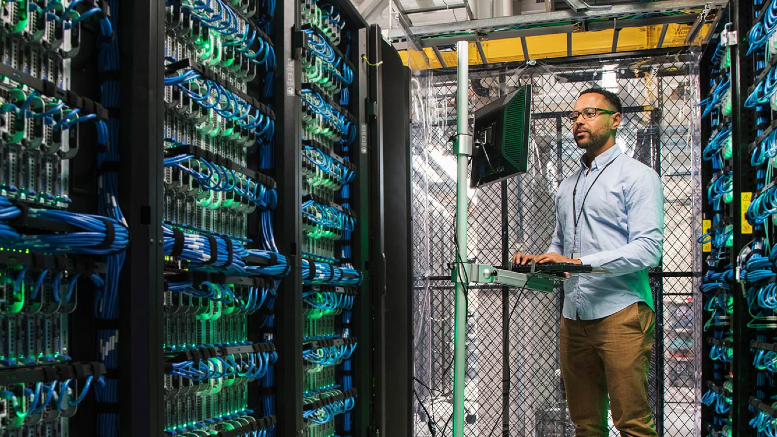
Short on time? Read the key takeaways:
- Virtualization drives cloud transformation, but success requires understanding both: challenges and opportunities.
- New licensing models can dramatically increase costs and create long-term financial implications.
- Employee training minimizes operational disruptions from platform changes and helps bridge skill gaps.
- Strategic planning with business units’ requirements, corporate targets, vendor agreement reviews and contingency plans smooths transitions.
What’s the real tea on virtualization? It’s a crucial piece of cloud transformation, but it introduces new challenges and opportunities that require careful brewing of strategy and execution.
This starts with understanding its value. Virtualization is the virtual representation of physical hardware. It takes organizations from running applications in hardware systems to managing them in virtual machines and containers, introducing greater agility and efficiency.
Virtualization is constantly evolving, and recent industry changes impact many organizations. Shifts from perpetual to subscription licensing models have caused businesses to experience increased financial spending, abrupt modifications to virtualization portfolios and a lack of transparency into future roadmaps.
Half the companies I talk to are migrating workloads from hyperscalers back to private clouds for computing resources, resulting in hybrid environments with one or more hyperscalers and on-prem resources. Attending to five crucial considerations can help you make smart virtualization moves during this transition period.
Financial impact: A cost model shift
One of the most immediate concerns for businesses is the financial impact of new licensing models. The shift from on-prem to the cloud and from perpetual to subscription licensing can significantly increase costs. Moving from a capital expenditure to an operating expense model also has long-term financial implications.
Some service providers will penalize your organization for underpaying for licenses while not compensating you for underutilizing your licenses. Observability and monitoring tools can help you track licensing if your solution provider isn’t transparent. FinOps allows you to contain costs. If you do your homework, this will be a manageable risk and have minimal impact on your virtualization and transformation journey.
Operational continuity, Managing platform and people disruption
Licensing and platform requirement changes can cause temporary downtime when moving to new platforms and retraining employees. Preparing your team can minimize these operational disruptions. Still, many organizations lack the staff to proactively identify unexpected workloads and challenges and will likely be hiring continuously for staff who match their day-to-day requirements.
This is especially challenging for small and medium-sized companies. While resources are widely available with skills covering the top hyperscalers like Google, Microsoft and Amazon, most prefer their employees to work onsite. This potentially makes it much more challenging to find experts for a specific hyperscaler in their geographic region or country.
However, this is not insurmountable as most managed services providers will offer a one-, two- or three-year period to shadow their experts and learn how to overcome technical and operational issues. And adopting a comprehensive hybrid/cloud operating model makes it easier to turn your cloud investment into a strategic advantage.
Vendor complexity: Rethinking partnerships and agreements
Multi-cloud and hybrid environments often involve a complex network of vendors, distributors and resellers. Critical workload components often fall under different provider agreements — risking overlooked dependencies and contractual conflicts. Navigating new vendor agreements and partnerships can be complex, but reviewing and renegotiating them can lead to better alignment with business needs and goals.
Clear, flexible vendor agreements allow you to avoid service gaps and unanticipated costs. To support innovation, include scalable service terms and provisions to accommodate changing business initiatives and priorities. Some companies sign a multibillion-dollar contract without realizing that a different provider’s contract covers certain specific components of their operations. That could lead to a scramble when that contract ends.
While your organization probably chose a partner that met your technical, cultural and skill requirements, your agreements should include an exit strategy. A system integrator or service provider may increase pricing. Your organization may change your business objectives and service delivery expectations or want to try another provider. An exit strategy gives you an amicable parting if a contract no longer serves your needs.
Addressing the skills gap: Building future capability
As virtualization platforms evolve and new cloud-native technologies emerge, the skills required to operate modern infrastructure are changing. Assessing your team's current skills can identify gaps, particularly in platform consolidation, cloud security and AI integration. You can address these gaps with training and development programs that equip team members to handle new platforms. Hyperscalers, large cloud service providers with global data centers, continuously evolve. Your employees must stay ahead of new services and product changes or risk cybersecurity challenges, inadequate IT services or operational issues.
Some organizations stretch existing resources instead of hiring new people to handle emerging technologies like generative AI. However, you still need to invest in training to maximize its value. Training should be continuous, role-specific and forward-looking, focusing on emerging tools and technologies. Along with this employee training investment, competitive compensation and career growth pathways can keep highly skilled employees at your company. Combining upskilling and salary investment can help you avoid skill and knowledge drainage.
Strategic alignment: Connecting virtualization to business outcomes
Too often, transformation efforts are led solely by IT teams without sufficient input from business stakeholders. The result: technology decisions that don’t fully support organizational goals. However, virtualization isn’t a bottom-up, tech-for-tech transition but a top-down, business-driven transformation.
A roadmap with clearly defined milestones, contingency planning and vendor alignment can help ensure your virtualization investments deliver measurable business outcomes. A strategic plan for your IT infrastructure needs to include:
- Current workloads
- Business unit requirements
- Compliance requirements
- Service delivery expectations
- Corporate targets
- Contingencies for potential changes and disruptions
- Clear steps for transitioning to new platforms or vendors
- Company growth plans
For the best results, communicate your strategies to service providers so they can align with your targets. Some customers intend to invest 100% in public cloud and later learn they lacked sufficient planning and didn’t choose the best cloud for their workloads. A comprehensive strategic plan smooths your cloud transition and transformation, avoiding technical hiccups from services that aren't fully managed or secured.
Position your organization to excel at virtualization
Virtualization remains a foundational technology in cloud transformation, but navigating its challenges requires more than technical know-how. From managing new financial models and vendor relationships to closing skill gaps and ensuring business alignment, success depends on strategy and agility.
At Unisys, we help organizations unlock virtualization value, reduce risk and build scalable, future-proof infrastructure. Our advisory team supports clients in contract reviews and vendor rationalization efforts and we can develop a strategic plan to maximize virtualization’s value and minimize issues.
Learn how Unisys' cloud management capabilities allow your organization to realize its full potential and contact us today to learn how we can help you advance your virtualization decision-making.




















